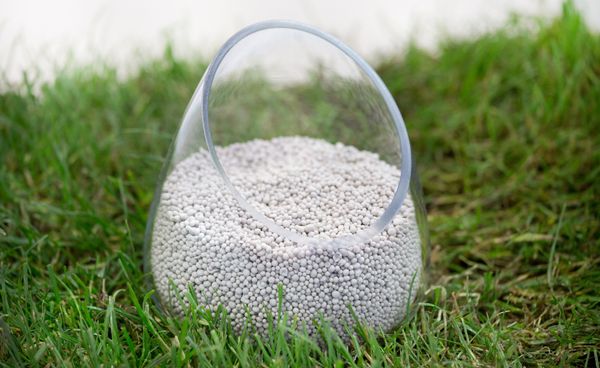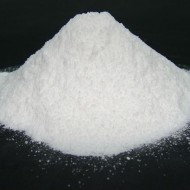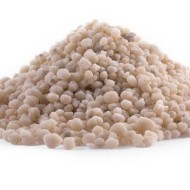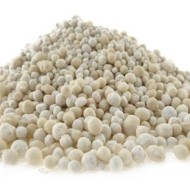9 types of phosphorus fertilizers and their application
Content
The importance of phosphorus in plant life
Phosphorus, along with potassium and nitrogen, is one of the three most important components for the normal growth and development of a plant. A big plus of fertilization is that the culture assimilates only the required amount of feeding. Based on this, an overdose is not terrible. Without the necessary minimum of a trace element, the reproductive function of the plant will be significantly impaired.

Video "What you need to know about phosphate-potassium fertilizers"
In this video, the expert will tell you how phosphorus-potassium fertilizers are useful.
Signs of phosphorus deficiency
Finding out that a culture is lacking in phosphorus is quite simple:
- change in the color of the aboveground part: all the greens gradually darken, and then acquire a rich purple or crimson hue;
- deformation and fall of foliage;
- the lower tiers of leaves are covered with necrotic changes that turn into dark spots;
- decrease in the size of internodes;
- the plant stops growing upward, acquires a bushy shape;
- significant deterioration in the development of the root system;
- decrease in the degree of productivity.
You can save the plant by introducing the optimal dose of phosphorus, but first you need to figure out why this situation arose.
Reasons for micronutrient deficiencies
Lack of fertilization can occur not only due to the lack of fertilization. There may be the following reasons:
- violation of the rules for applying top dressing;
- the wrong composition of agrochemicals, due to which the element is retained in the soil and is transformed into compounds that are difficult to assimilate;
- disturbances in the work of soil microflora, which occur as a result of intensive cultivation and use of the soil;
- cultivation of soil according to the inorganic type.
Varieties of phosphorus fertilizers
Most often, various types of fertilizers are used in horticulture, which have already been compiled in complexes: potassium + phosphorus or nitrogen + phosphorus + potassium. It is the phosphorus dressings that have their own classification: water-soluble, hardly soluble, citrate- and lemon-soluble.

Water soluble
They belong to the first category, that is, they dissolve in water, affect the growth of roots and stimulate their development and strengthening. Even a novice gardener and gardener heard which fertilizers belong to this most popular group. At the same time, fertilizers of this group are easily absorbed by plants.
Superphosphate
It can be said for sure that it is the most common phosphorus-containing agrochemical, which contains monocalcium phosphate, phosphoric acid, sulfur and magnesium. The trace element content is about 20%.
The scope of application of superphosphate is very wide, since it is used to create a nutrient medium for various crops. In addition, it works in any type and composition of soil. It can be used in pure form and as part of nutritional complexes.
Superphosphate contributes to the full development of the plant, increases resistance to temperature extremes and cold, stimulates the strengthening of immunity.The use of fertilizer guarantees an increase in the yield of fruit and cereal crops.
Tomatoes are a perfect example of the benefits of phosphorus. Their appearance literally changes, the number of fruits increases significantly, and their quality improves.
Double superphosphate
It is used mainly in the fall, in order to have time to be absorbed by the soil, and then by the root system by the summer. The presence of concentrated phosphorus in the composition (40% or more) introduces some restrictions and features of use. Therefore, it is necessary to use the drug in clearly indicated doses and proportions, otherwise it will simply burn the roots.
Although the cost of double superphosphate is higher, it fully justifies itself - a small enough dose for a powerful effect. Usually fat is used for feeding fruit trees and berry bushes: apple, plum, apricot, raspberry, gooseberry.
Sparingly soluble
The third category is phosphorus-containing fertilizers. This group does not dissolve so easily, but its representatives have many additional advantages, for example, they lower the acidity of the soil.
- Phosphorite flour
- Diammophos
- Ammophos
Ammophos
Neutralizing phosphoric acid with ammonia promotes nitrogen production. Also, as a result of the reaction, phosphorus and nitrogen (of which a small amount remains) acquire an easily assimilated form. Also, there are no nitrate compounds in the composition. Ideal for melons and gourds, in particular for cucumbers, since the absence of chlorine in the preparation does not provoke allergic reactions on plant leaves.
Ammophos can be applied at any stage of the growing season, but it is best applied in the fall before plowing or in the spring before planting. The preparation is suitable not only for vegetables and fruit trees, but also for flowers and ornamental plants.
Diammophos
Often the drug is called ammonium hydrogen phosphate for its main component. It is used very economically, since the main element is contained in a highly concentrated form. Promotes an increase in basicity and a decrease in the degree of acidity of the soil. Can be applied in combination with organic matter of animal origin.
Diammophos can be used both before sowing and during the process. Suitable for potatoes, tomatoes and cucumbers. In liquid form, it can also be applied during flowering under the root of the plant.
Phosphorite flour
Fertilizer is obtained in the process of grinding phosphorites into gray powder. It is mainly used for feeding field, cereal crops during sowing. Has a delayed action. It is used to "revitalize" the soil in the fall. Ideal for black soil, gray forest, swampy and podzolic soils.
Contains about 32% phosphorus. To obtain high-quality compost, it is used together with manure and peat.
Vivianite
Vivianite can only be obtained from iron ore mined in the swamps. A grayish-blue or blue powder contains up to 30% phosphorus. It can be sold in pure form or with an admixture of peat, but with a lower phosphorus content. In terms of the spectrum of action and areas of application, it is similar to phosphate rock.
Citrate and lemon-soluble
The second category of fertilizers. They are suitable for all types of soil, reduce acidity and do not contain harmful impurities.
Bone flour
Made from bone tissue. They do not contain chemicals, but the percentage of phosphorus is very high - 62%. No harmful impurities, environmentally friendly product. It is used for feeding fruit crops and ornamental plants. Also suitable for composting.

Prencipiat
Light gray or whitish gray powder. May contain 24 to 31% phosphorus. Suitable for all plants and all types of soil.In terms of efficiency, it is not inferior to superphosphate, and in terms of normalizing the acidity of the soil, it is even more effective. Can be used as a complete and complementary food.
Thermophosphate
It is produced in three main types: open-hearth slag, tomoslag and defluorinated phosphate. The percentage of the trace element content is from 15 to 30, depending on the variety. The most concentrated option is defluorinated phosphate.
Tomoslag is made from iron ore, the most effective type for normalizing soil acidity. However, the phosphorus content is also at its lowest.
Open-hearth slag is an irreplaceable subcrust for highly acidic soil types.
Phosphorus-containing complexes are useful not only for the plant itself, but also for improving the quality of the soil. They can be used not only for feeding, but also for creating high-quality compost with your own hands.



